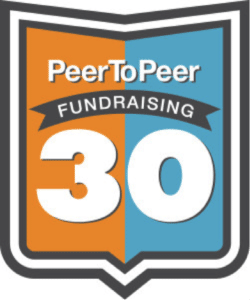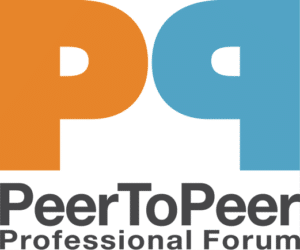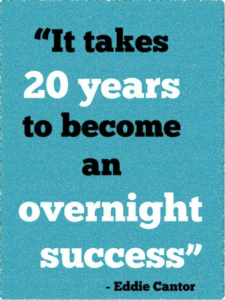
 About 400 of us gathered in sunny Orlando a few weeks ago to participate in the annual Peer-to-Peer Professional Forum conference run by our friend David Hessekiel and his talented team at the Cause Marketing Forum, Inc.
About 400 of us gathered in sunny Orlando a few weeks ago to participate in the annual Peer-to-Peer Professional Forum conference run by our friend David Hessekiel and his talented team at the Cause Marketing Forum, Inc.
An annual conference highlight is the unveiling of the Peer-to-Peer Fundraising Thirty, the annual benchmarking study powered by consulting firm, Plenty. At the premiere this year, Plenty CEO Jeff Schuck and David challenged us to think about the expansive nature of the peer to peer (P2P) fundraising experience.
Their research and corresponding comments took us outside the traditional run, walk and ride models to explore the bigger of picture of P2P methodology at work. Naturally, this included the phenomenally-successful story of the Ice Bucket Challenge, but also drew our attention to a number of other growing programs, such as St. Baldrick’s Foundation’s Head Shaving Events for childhood cancer research and men’s health movement, Movember. In these models, individual participants are given the freedom to creatively express themselves while fundraising for their chosen cause.
Among the trends noted as gaining momentum the past couple years is a “potential changing of the guard” and the continued, robust “growth of smaller, niche causes and diverse events”. For example, one of the P2P programs showing substantial growth is Memorial Sloan Kettering’s Cycle for Survival which raised $1.2M in 2009 and nearly hit $11MM in 2014. In addition to their success with peer to peer, even more lessons can be learned from the evolution and integration of founding corporate partner, Equinox. What started as an idea led by one brave Equinox member afflicted with a rare form of cancer has developed into a best in class cause marketing partnership – doing well by doing good together. In my P2P session, Taking Sponsorship to the Next Level, I highlighted achievements such as their expanded partnership activation from a single-location event to offering high-energy rides at Equinox clubs in 13 cities last year, including an impressive Times Square Take-Over.
On the traditional front, one ‘old-school’ P2P program to watch is the Walk to End Alzheimer’s, which broke into the top ten ranking this year! Benefitting from investments made to equip its 80 chapters across the country with tools to ensure consistency and expand experiences with volunteers, the Walk to End Alzheimer’s has more than doubled revenue since 2006 and raised just shy of $68MM in 2014.
American Cancer Society’s Relay for Life event continues to be the big dog. At $335MM, Relay raises three times the amount of its nearest competitor, American Heart Association’s Heart Walk. While Relay did experience a year over year loss in 2014, ACS officials explained that was largely due to a multi-year, organization-wide restructuring effort. To me, what is most interesting is their one-year loss is far larger than the annual revenue of many P2P programs. At the same time, there has been significant growth in hospital and other programs that support specific types of cancer, meaning that the size of the overall pie hasn’t necessarily shrunk; rather the distribution has shifted to impact to a wider pool of cancer-support organizations.
 The one P2P Fundraising Top 30 trend that particularly hit home with me is that “overnight success takes time”. This is such an incredible reminder that perseverance, hard work, investment and re-tooling along the way will lead you on the path to remarkable success. I was curious about the origin of that old adage and was surprised to find predictions vary widely on how long it really does take to become an “overnight success”. In the 1930’s, vaudeville star/humanitarian/March of Dimes advisor Eddie Cantor famously said it takes 20 years to make an overnight success. A few years ago, Twitter cofounder/humanitarian/DonorsChoose advisor Biz Stone says to expect an overnight pay off after 10 years of hard work.
The one P2P Fundraising Top 30 trend that particularly hit home with me is that “overnight success takes time”. This is such an incredible reminder that perseverance, hard work, investment and re-tooling along the way will lead you on the path to remarkable success. I was curious about the origin of that old adage and was surprised to find predictions vary widely on how long it really does take to become an “overnight success”. In the 1930’s, vaudeville star/humanitarian/March of Dimes advisor Eddie Cantor famously said it takes 20 years to make an overnight success. A few years ago, Twitter cofounder/humanitarian/DonorsChoose advisor Biz Stone says to expect an overnight pay off after 10 years of hard work.
 Congratulations to all the P2P professionals on your overnight successes! And, good luck creatively engaging participants in diverse activities and encouraging their friends, family and business networks to donate to the causes they are personally driven to support.
Congratulations to all the P2P professionals on your overnight successes! And, good luck creatively engaging participants in diverse activities and encouraging their friends, family and business networks to donate to the causes they are personally driven to support.
If you’d like to read more interesting insights on the P2P Fundraising Top 30 trends, click to download the 2014 research and whitepaper.
